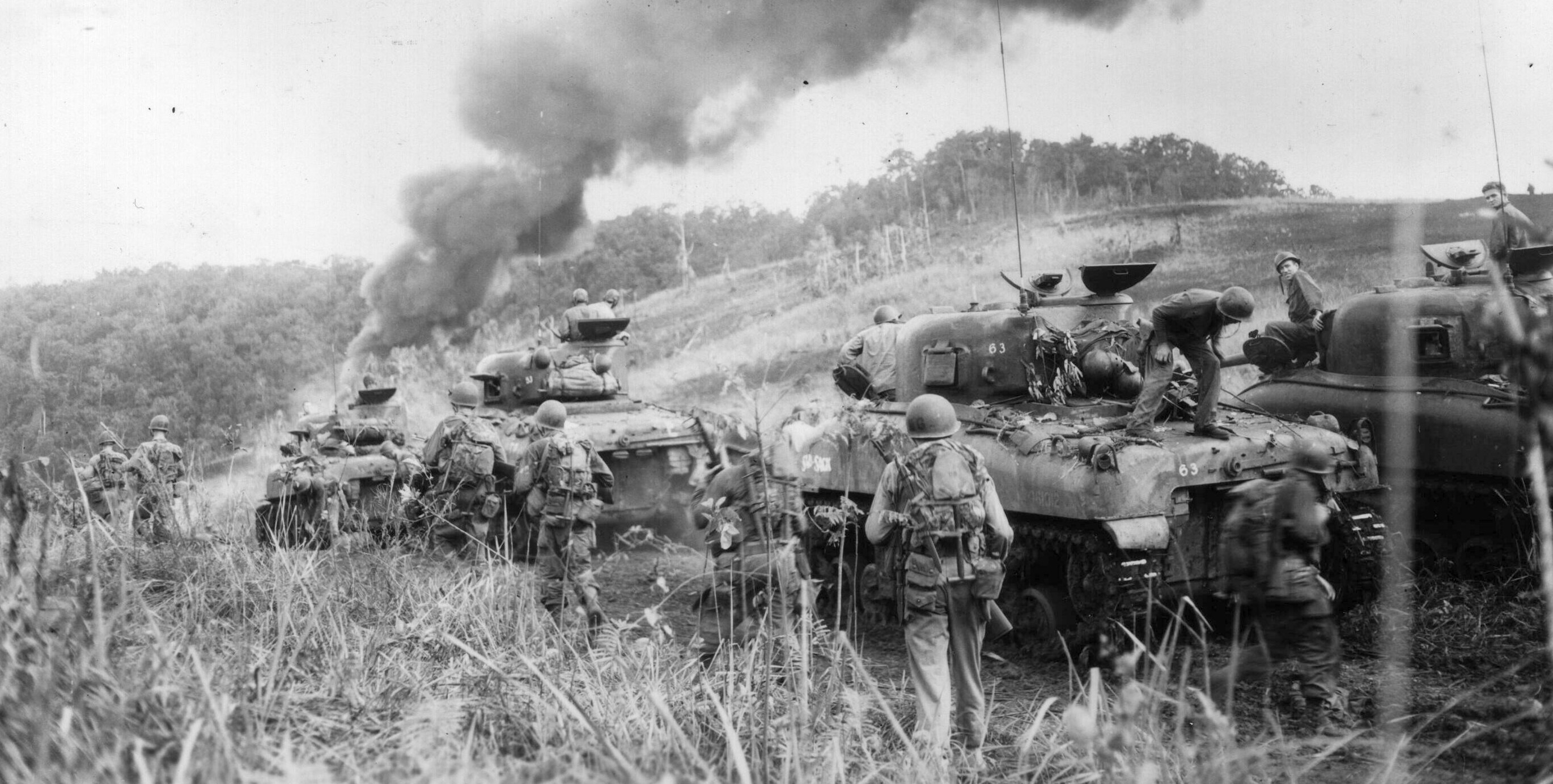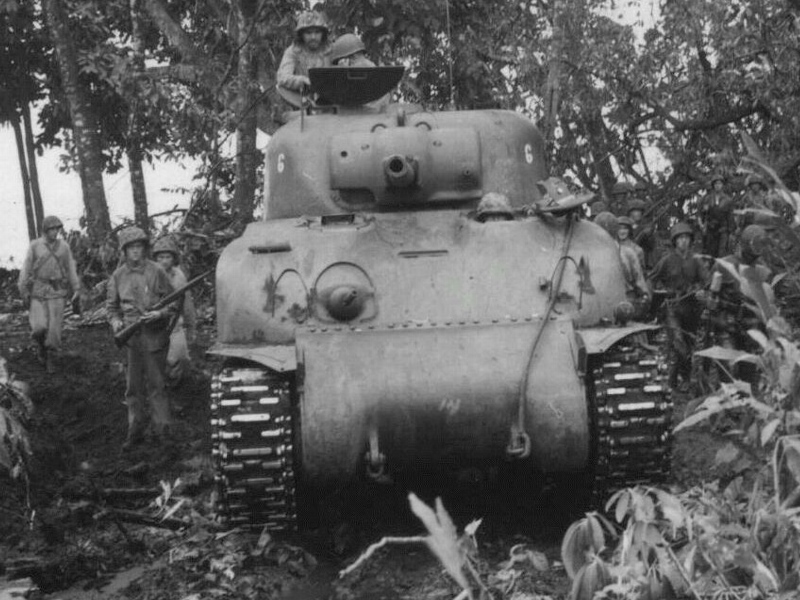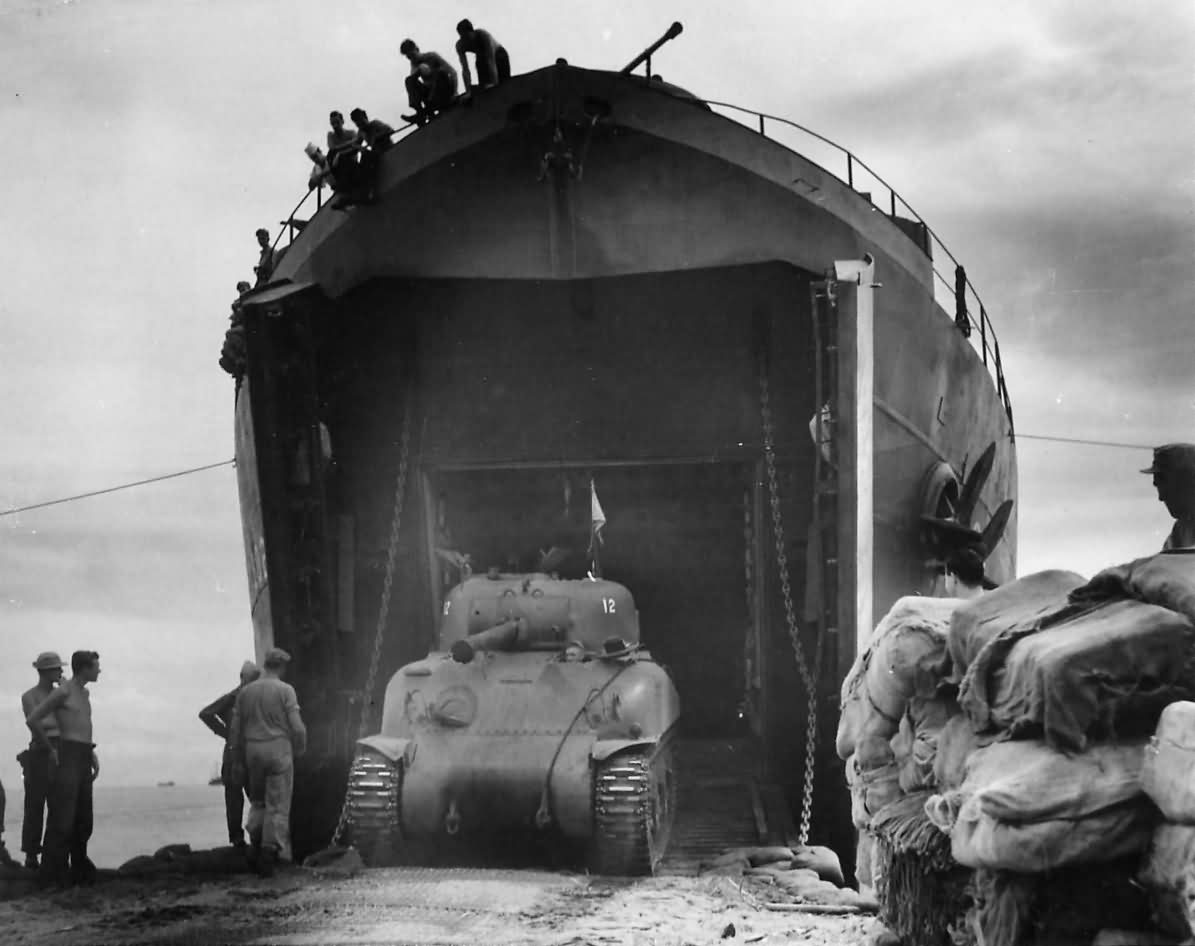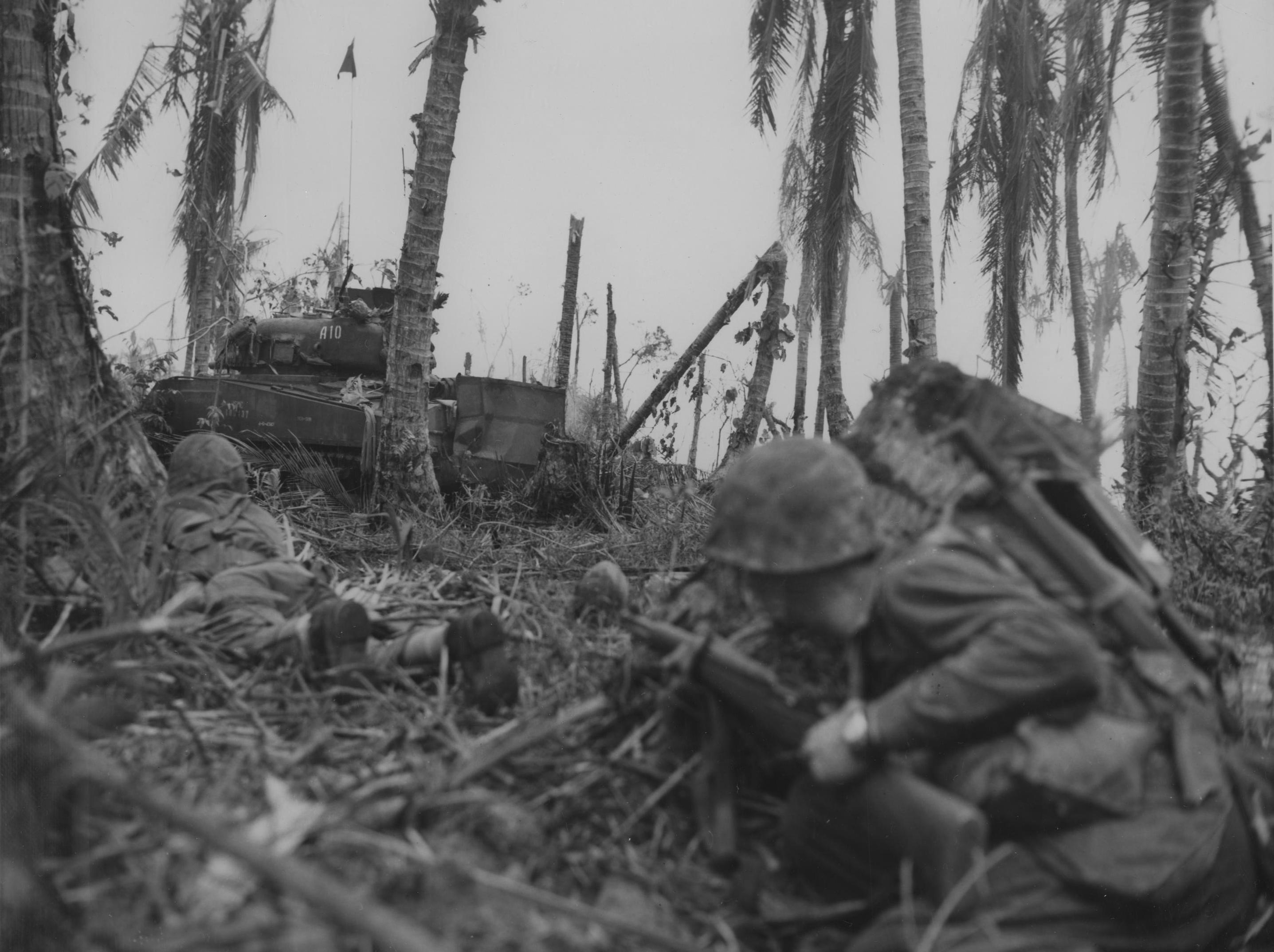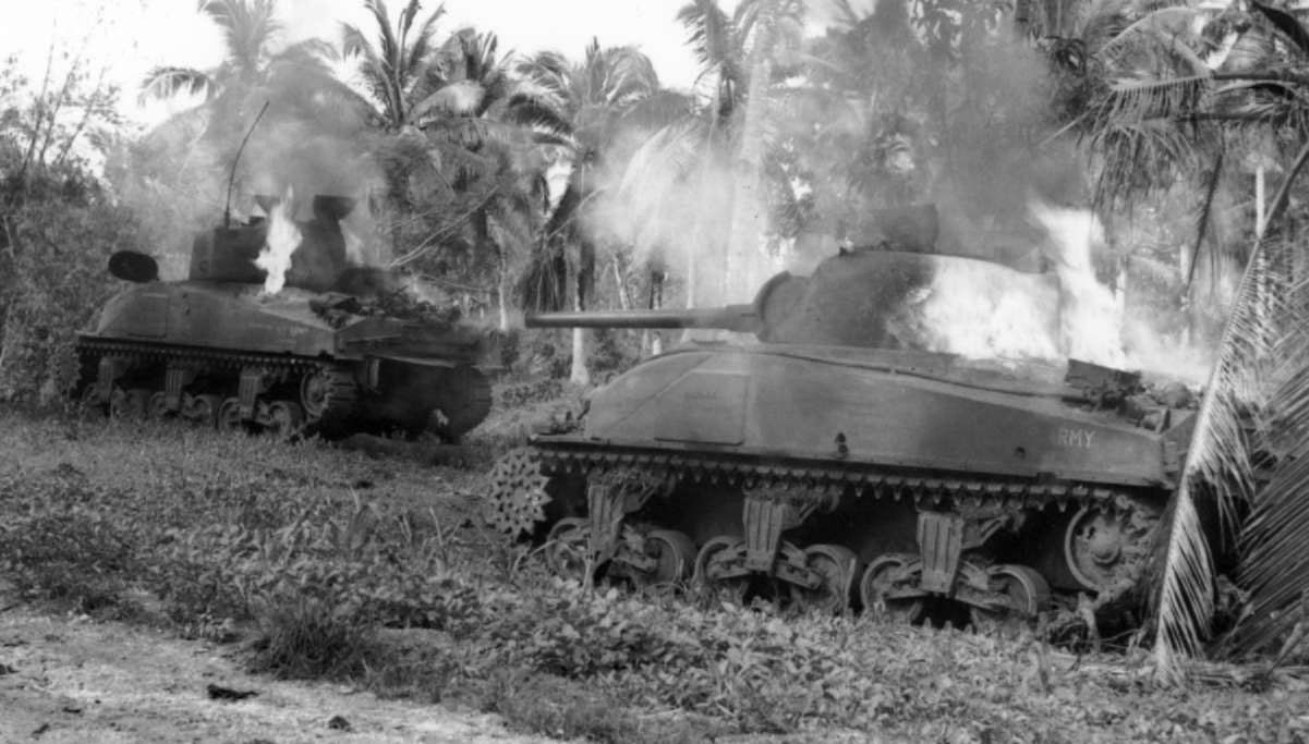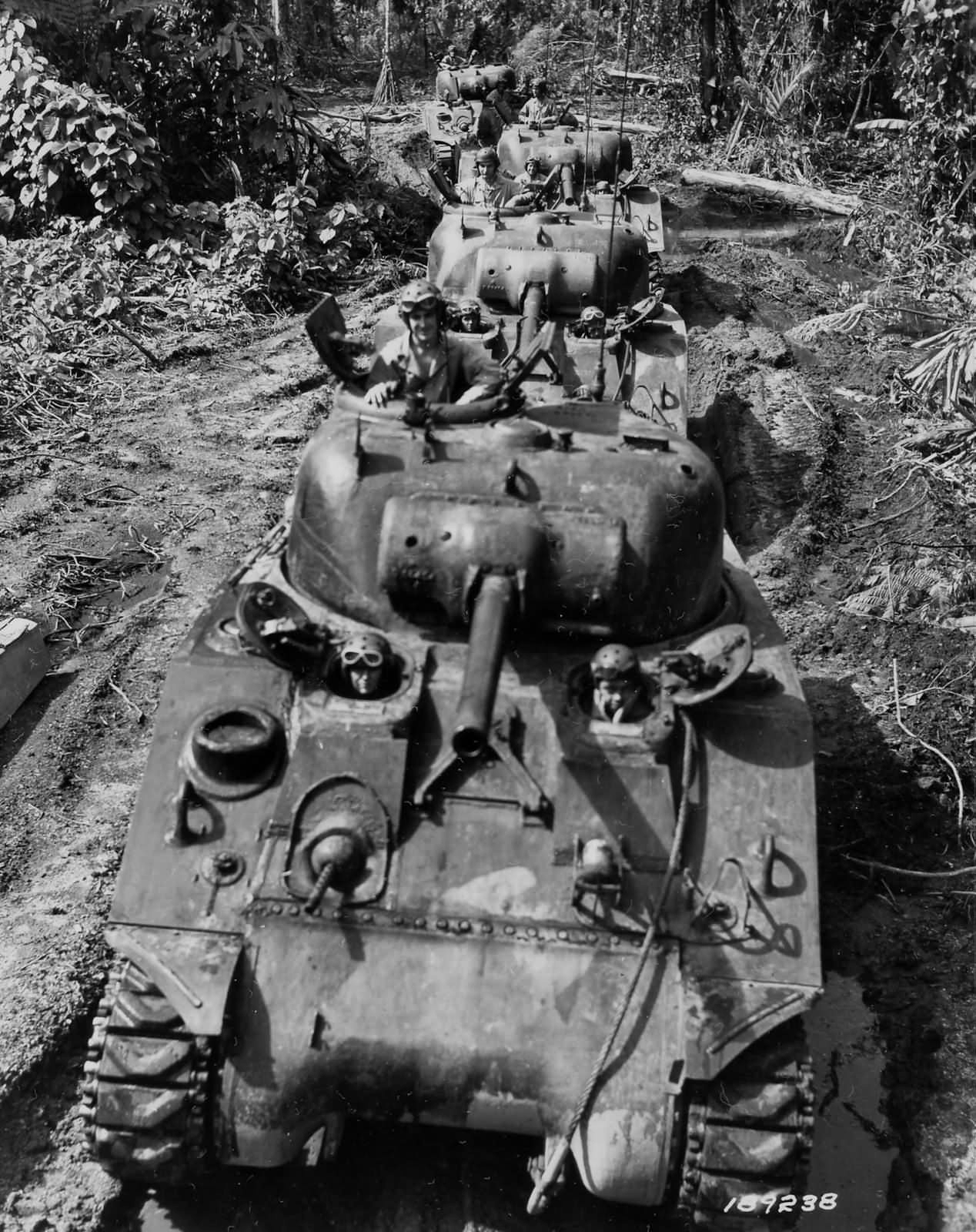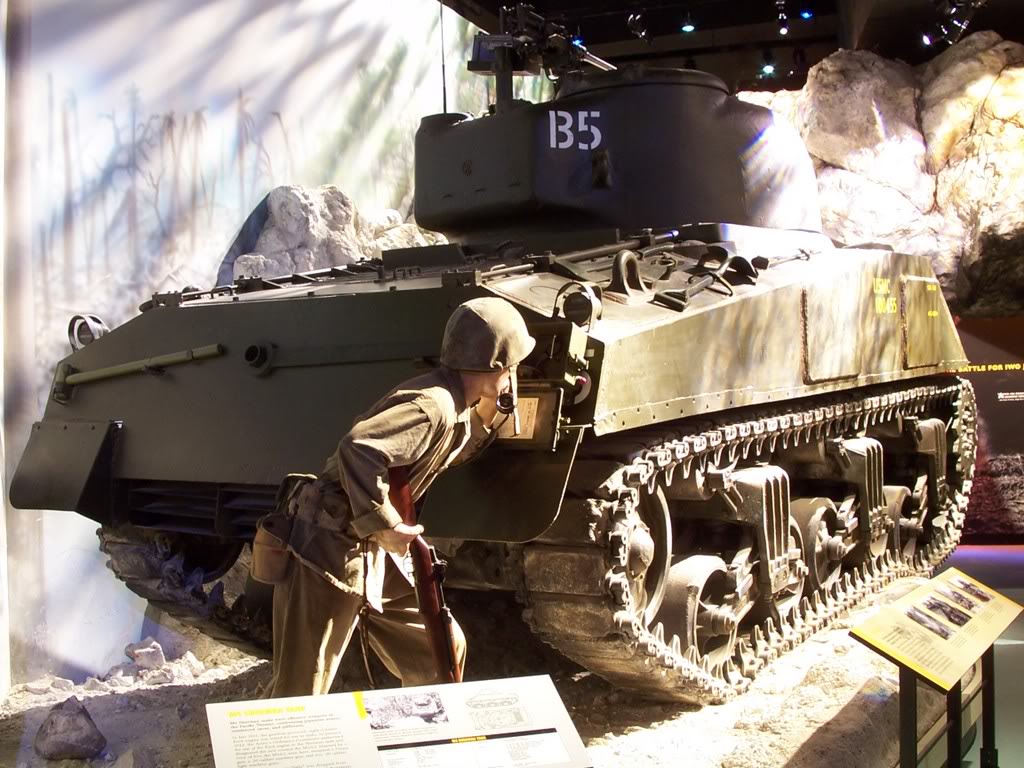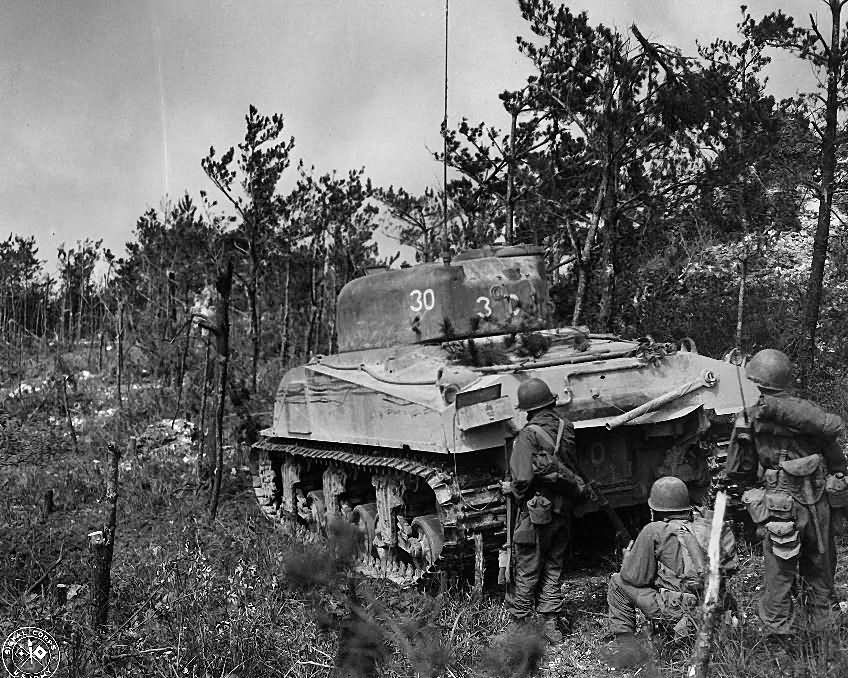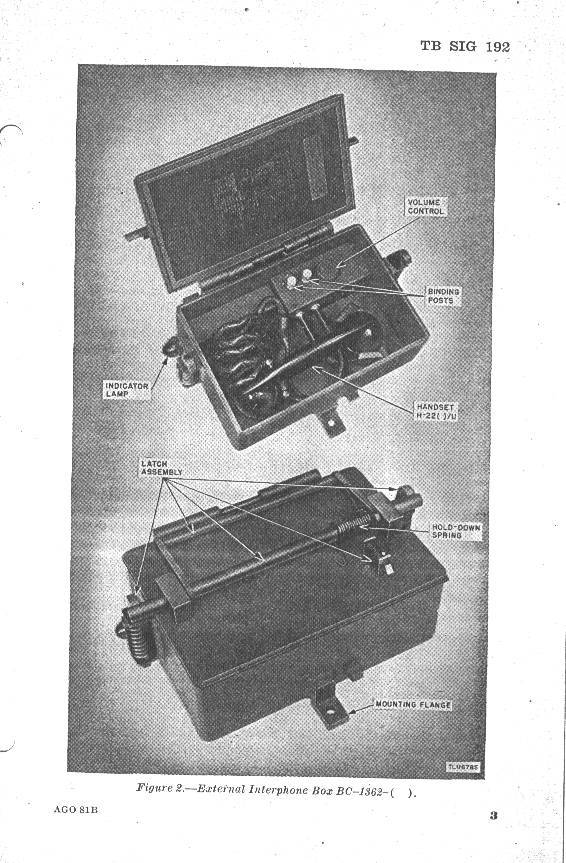City Tanking: The Tank Infantry Team in Cities and Towns
Tanks and cities do not like to mix, but when your job is to support the dough on the ground when they go into the city, so do the tanks. So when your Armored Division is ordered to attack into an urban area or the infantry division you’re supporting as a separate tank battalion goes into a city, so do your Shermans. When you really think about it, it’s a lot safer in a tank in an urban environment than for infantrymen, since they face all the same threats, but the tank has armor…
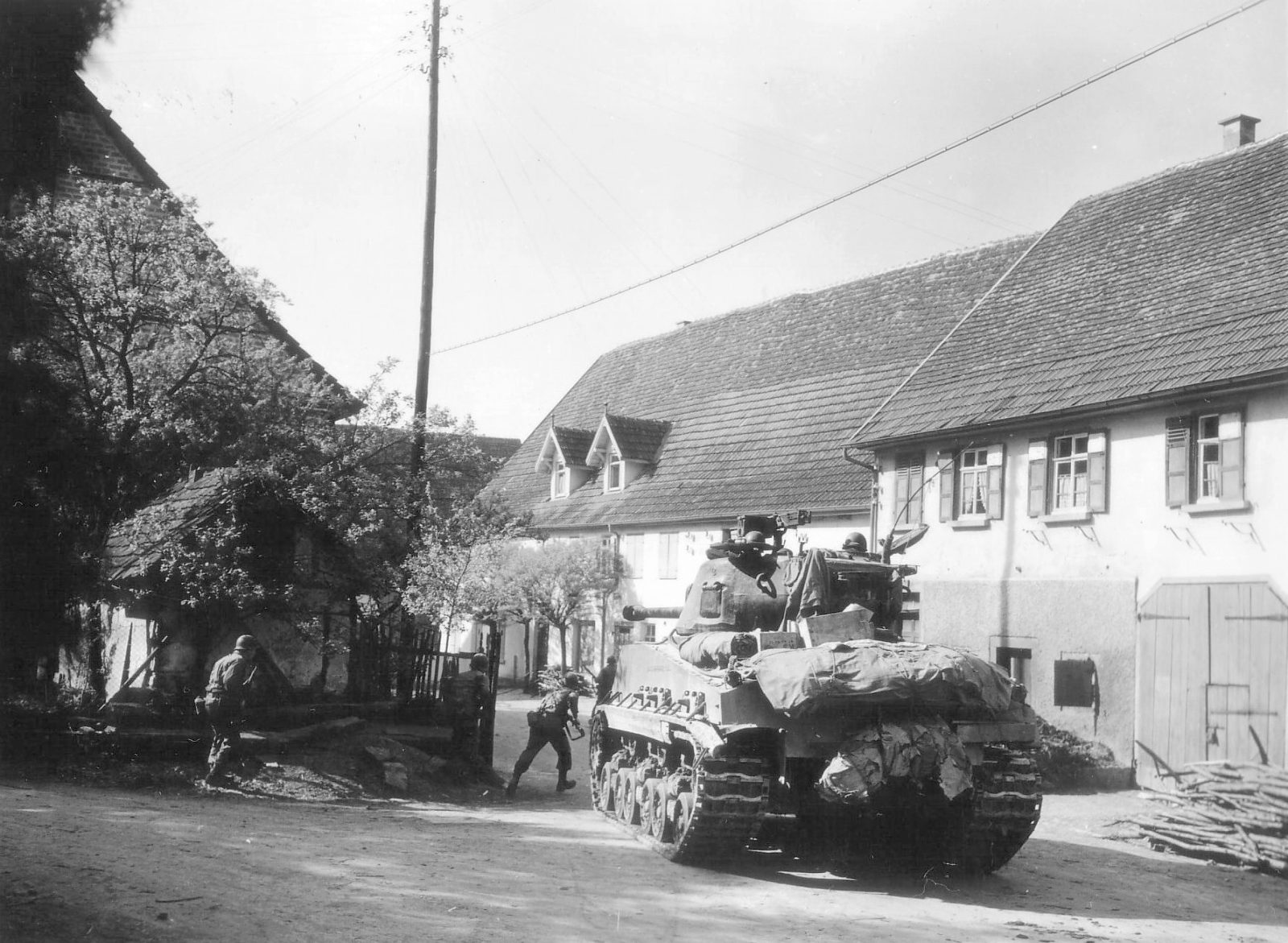
All the hiding places and areas tanks can’t see or reach is what makes a town or city far more dangerous to armor. More than forest or jungle, the city gives the enemy infantry so many good places to hide, the already nearly blind tank is at just about as big a disadvantage as it could be at, and they only have the firepower to use to thwart it, and at times the firepower was restricted. The clever US Army soldiers came up with solutions for this, like every other problem they encountered during the war.
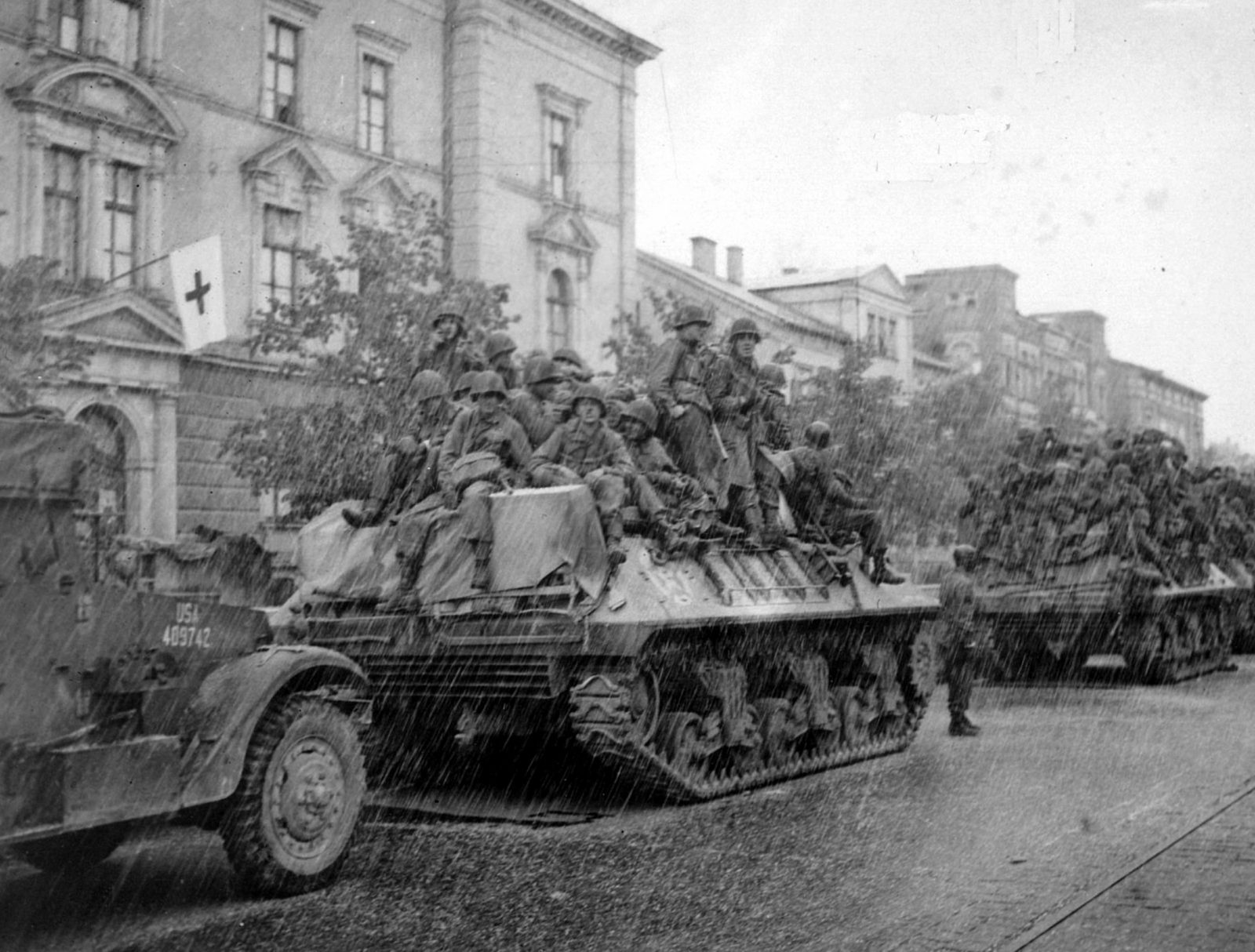
The main threats to a tank in an urban environment are enemy grunts with TD weapons like the Panzerfaust or Panzerschreck, or even just grenades and improvised explosives. Anti-tank guns would also still be a serious threat, but they are harder to hide in a city, but if they can be emplaced in the right kind of building, a stone, heavily constructed one, or area in the city that could cover many roads, like a hilly, mid-city park they can make a very tough strong point. In Europe, there are a lot of heavily constructed buildings too, but also large numbers of wood buildings a Sherman could bring down with ease, as long as it didn’t have a basement. If the defenders of the city have time to figure out all the good site lines and emplace things in ideal spots if they know a fight is coming, they can really make a city into a fortress.
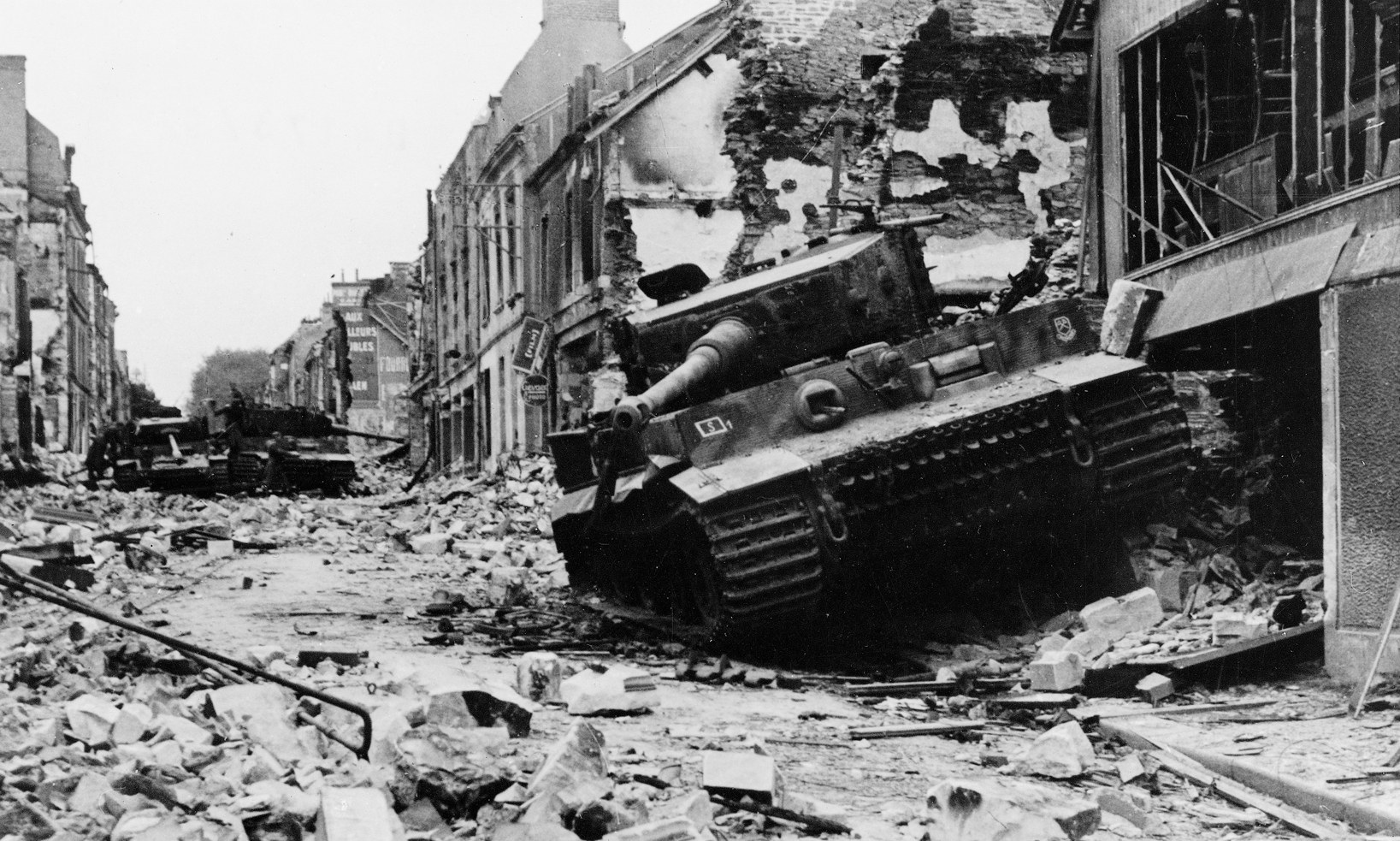
The defenders of a town or city have a big advantage in setting up their defenses. First off, they know the layout of the city; they would not just have maps or aerial photos to rely on. They can also blow up buildings and create roadblocks to channel attacks. When they set their city defenses up correctly they can set up roadblocks, covered machine guns, or even AT or infantry guns, which could not be engaged by the attackers behind the roadblock because of buildings and other obstructions. Another advantage the defenders would be sure to use would be pre ranging in their artillery and having it ready to drop right on key areas. If the town had any castles or other historic, large stone buildings, these would be troublesome hardpoints and in some cases bigger than the Shermans cannon could deal with.
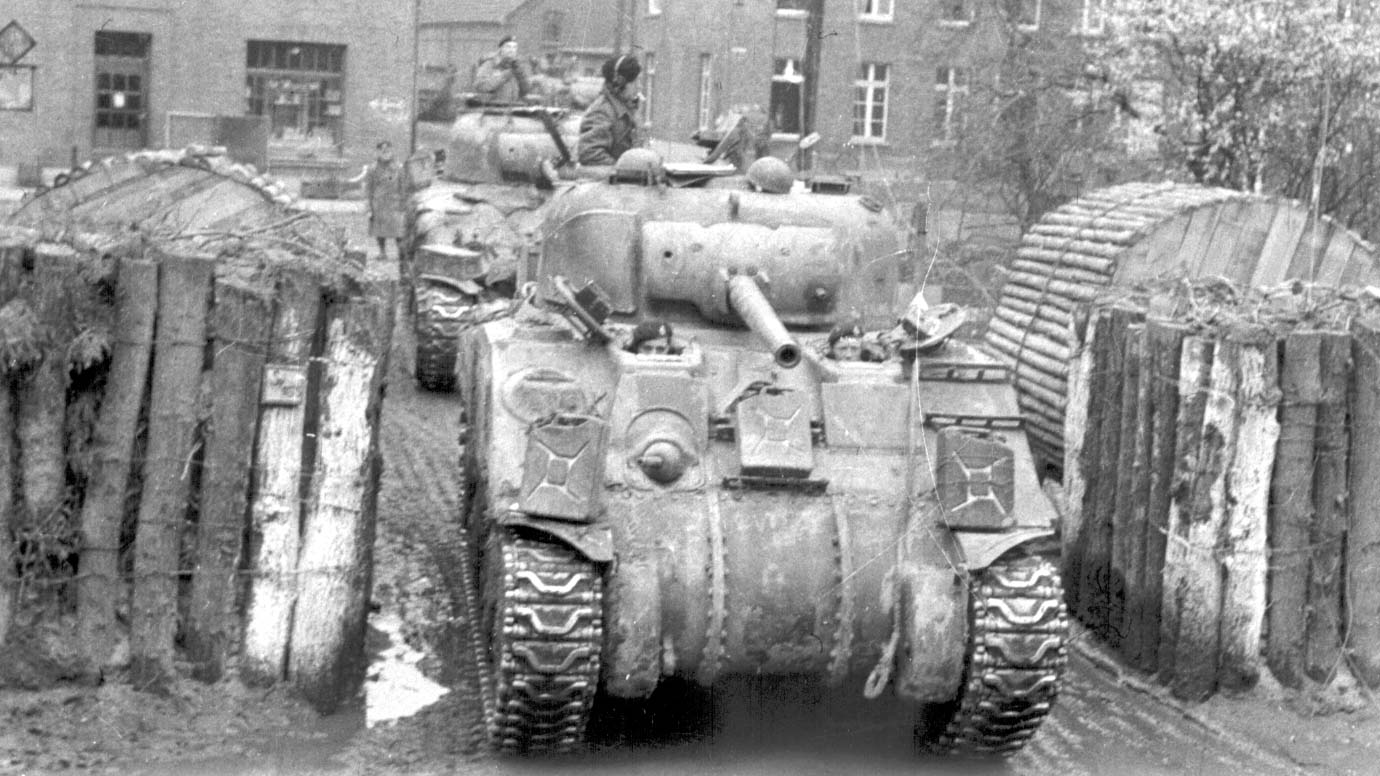
Another big threat to everyone was the sniper. A hell of a lot of tank commanders, infantry sergeants, and officers got offed by German snipers. Its well know, in the ETO, MTO, and North Africa, most American tank commanders fought un-buttoned, making them prime targets. It takes a ballsy sniper to take on a tank because if they miss and the commander spots them, he’s going to respond in one of three ways. By shooting at him with the tanks co-ax, by shooting him with the .50, or most likely of all, the 75mm with an HE round or WP round. Or all of the above and it takes even more guts to try and shoot a panzerfaust or Panzerschreck, and they get all of the above for sure.
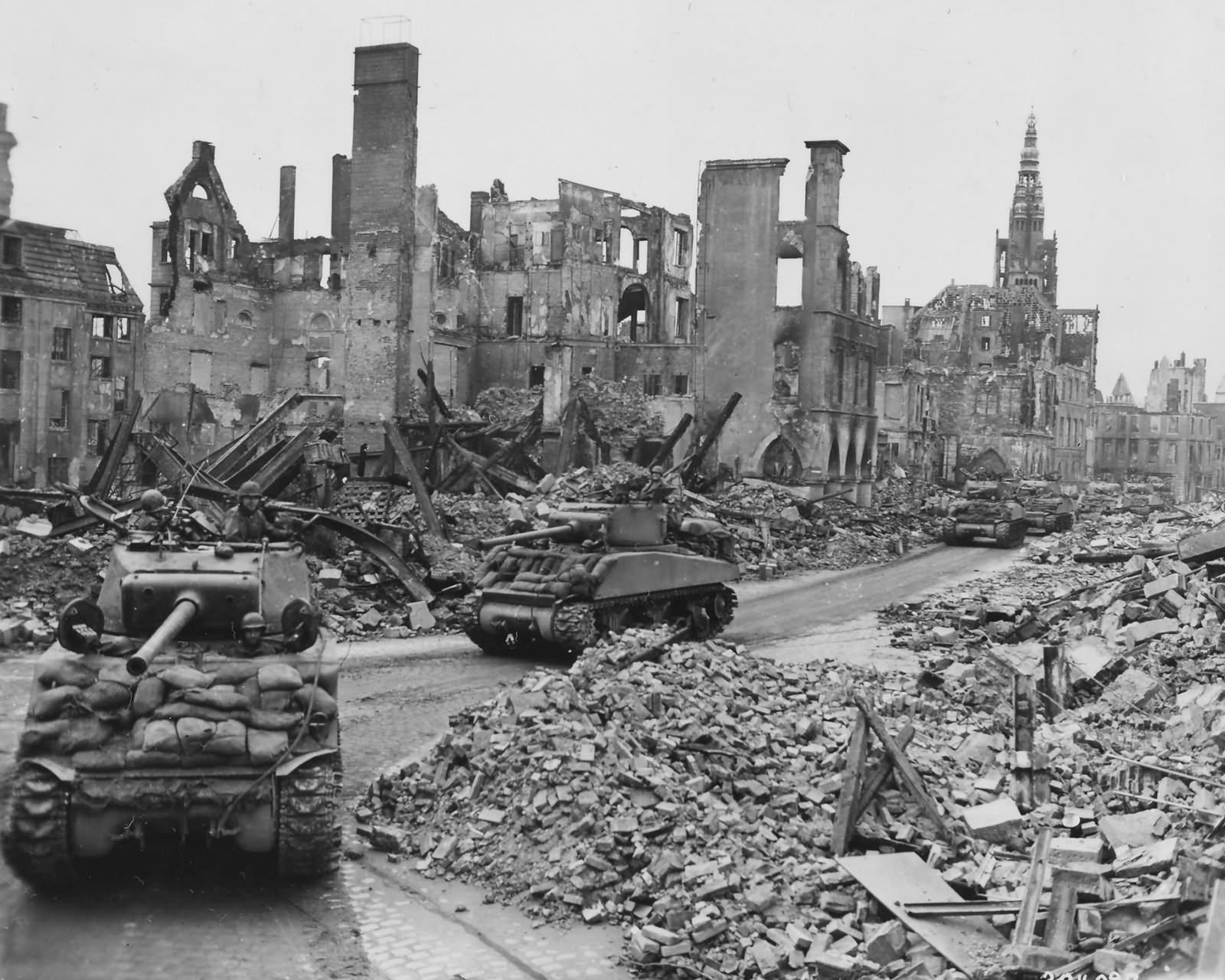
All these things that make city fighting deadly for tanks make it absolute murder for the foot soldier. In a tank you have armor, and if done right, a lot of men outside your tank there with the sole duty of defending it. Including a dough sergeant riding on your back deck talking to your commander and when the shit hits the fan, the commander buttons up and the sergeant gets on the phone at the rear of the tank and tells the commander what stuff to shoot. The key here though is they are outside, and the only cover they’ll have is the buildings around the tank or the tank. Far more doughs died in every engagement than tankers, and even more, would die without the tanks around.
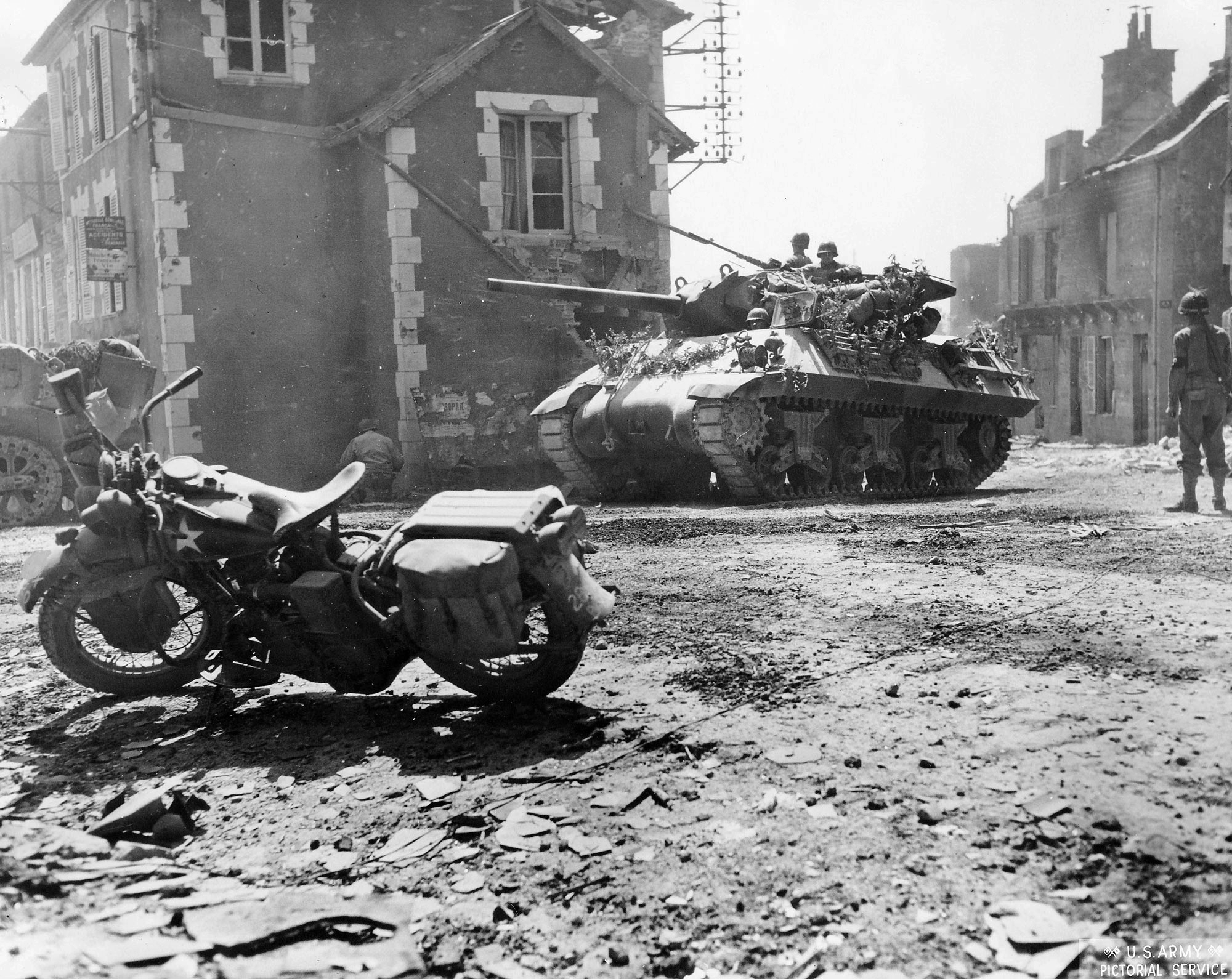
The proper way to use armor in the attack on a town, or city, was to start by offering to let them surrender. If they didn’t, depending on the politics around keeping the village intact, they may or may not shell the hell out of it before attacking. In many cases, the Nazi scum was occupying buildings in towns of countries they conquered and couldn’t care less if the places were wrecked and the town’s people killed when they were forced out. The Allies cared to some degree, but only so much, and if the Germans put up a really stiff fight, some big divisional artillery would probably be called in.
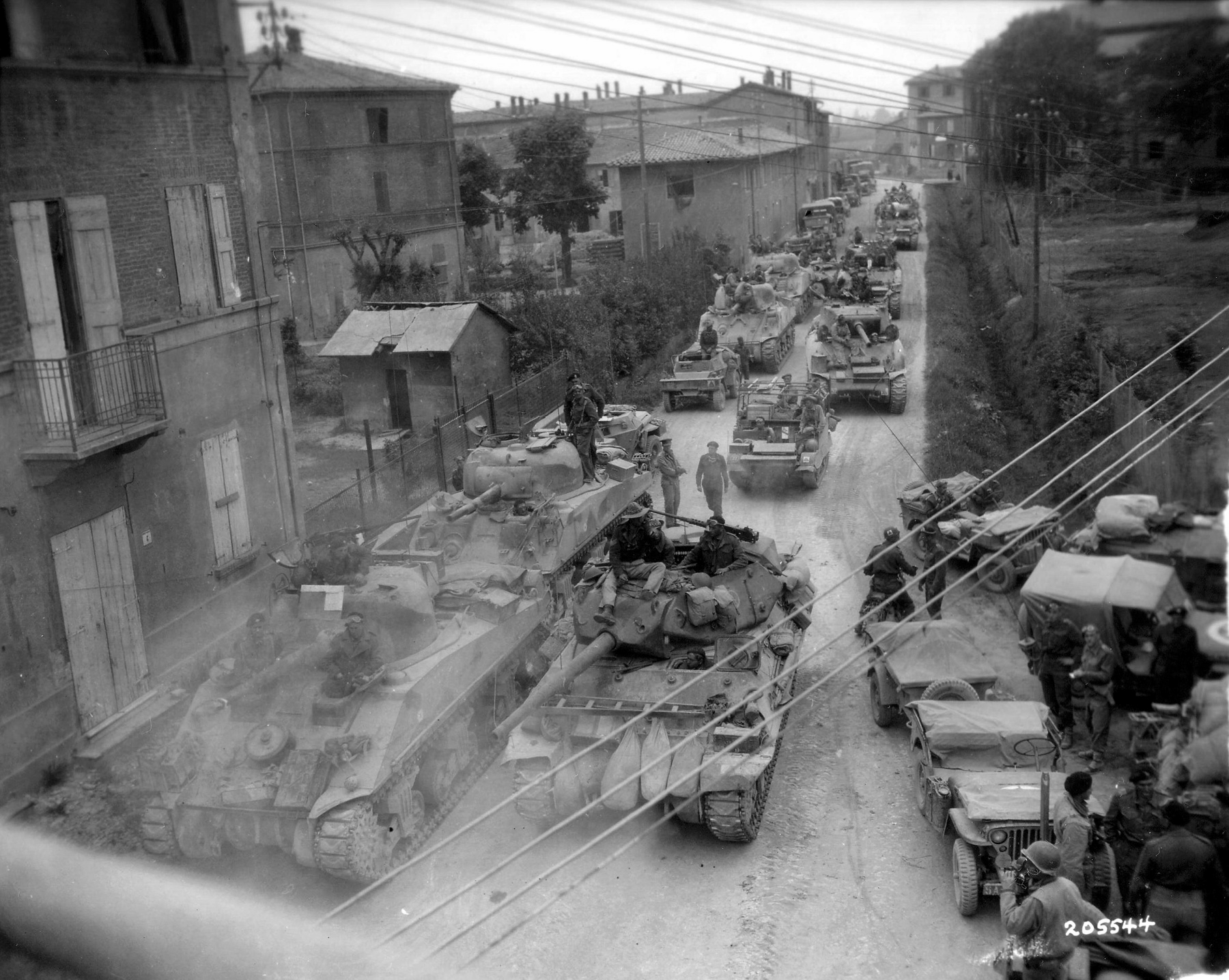
The next step, in any case, would be for the infantry doughs to move out. They move into the town ahead of the tanks and will take the buildings on either side of the roads the tanks will be forced to work on before the tanks move up. If there is resistance in the first buildings, the tanks will be in view of them and help support the infantry with direct fire. Once the buildings were secure, the tanks would move up, and the doughs would begin to attack the next set of buildings, that the Shermans would now be close enough to fire into. If the first buildings are tough, the tanks may move up a little to support the infantry pulling back.
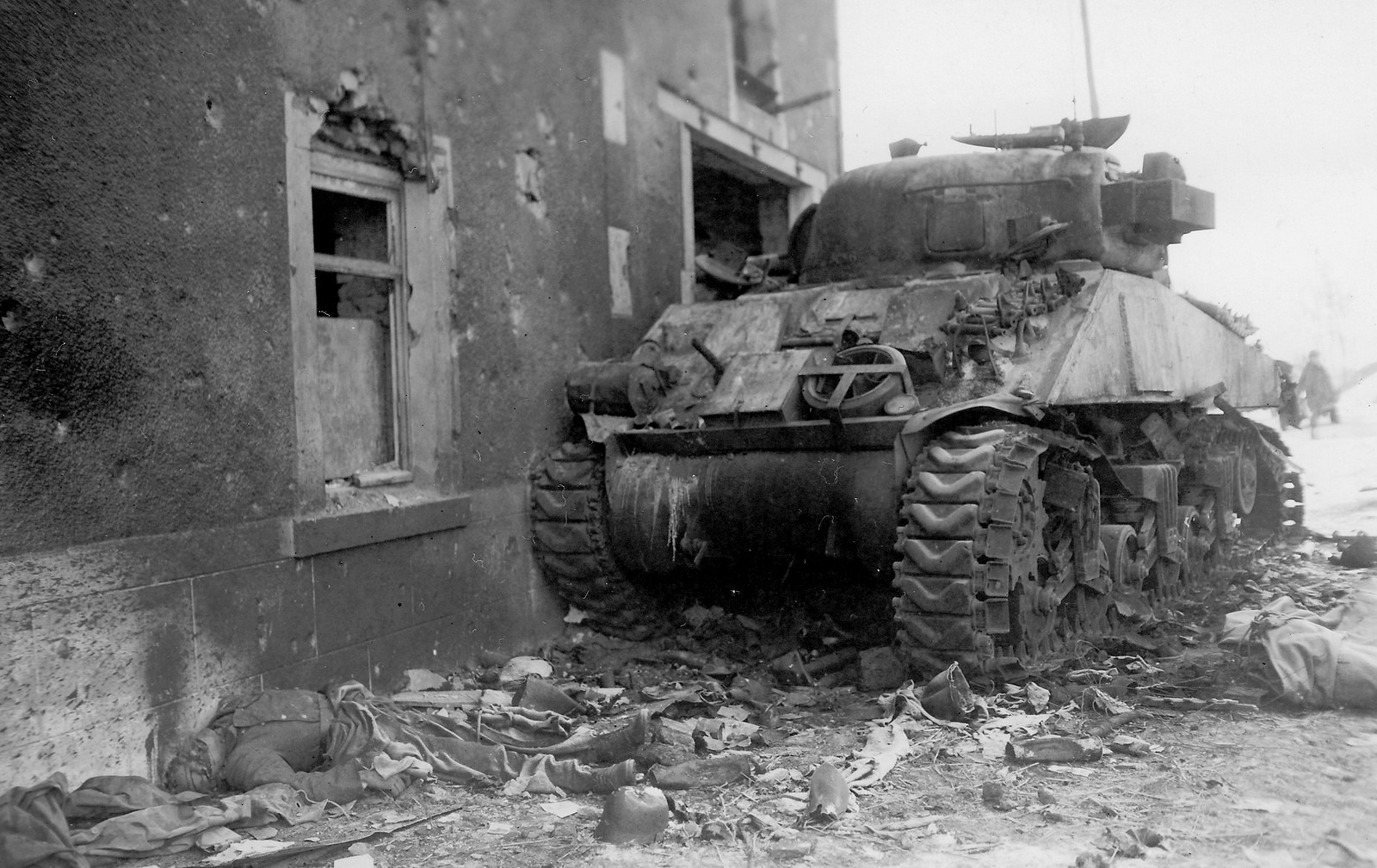
Once the attacking force had penetrated into the town or city, they have to be ever watchful of the German counter-attack, that the Nazi forces, who knew the places they were just forced out of well, would attack, and try and cut off the tanks, sometimes using clever routes the allied forces might not know about. If they succeeded the tanks were in trouble, because the infantry could attack them from several directions at once, and while the turret was facing one way, walk right up and place a charge a weak spot and blow the tank up. The key here would be if the US line was getting weak for the tanks to pull back with the doughs, shooting the hell out of the buildings as they backed out.
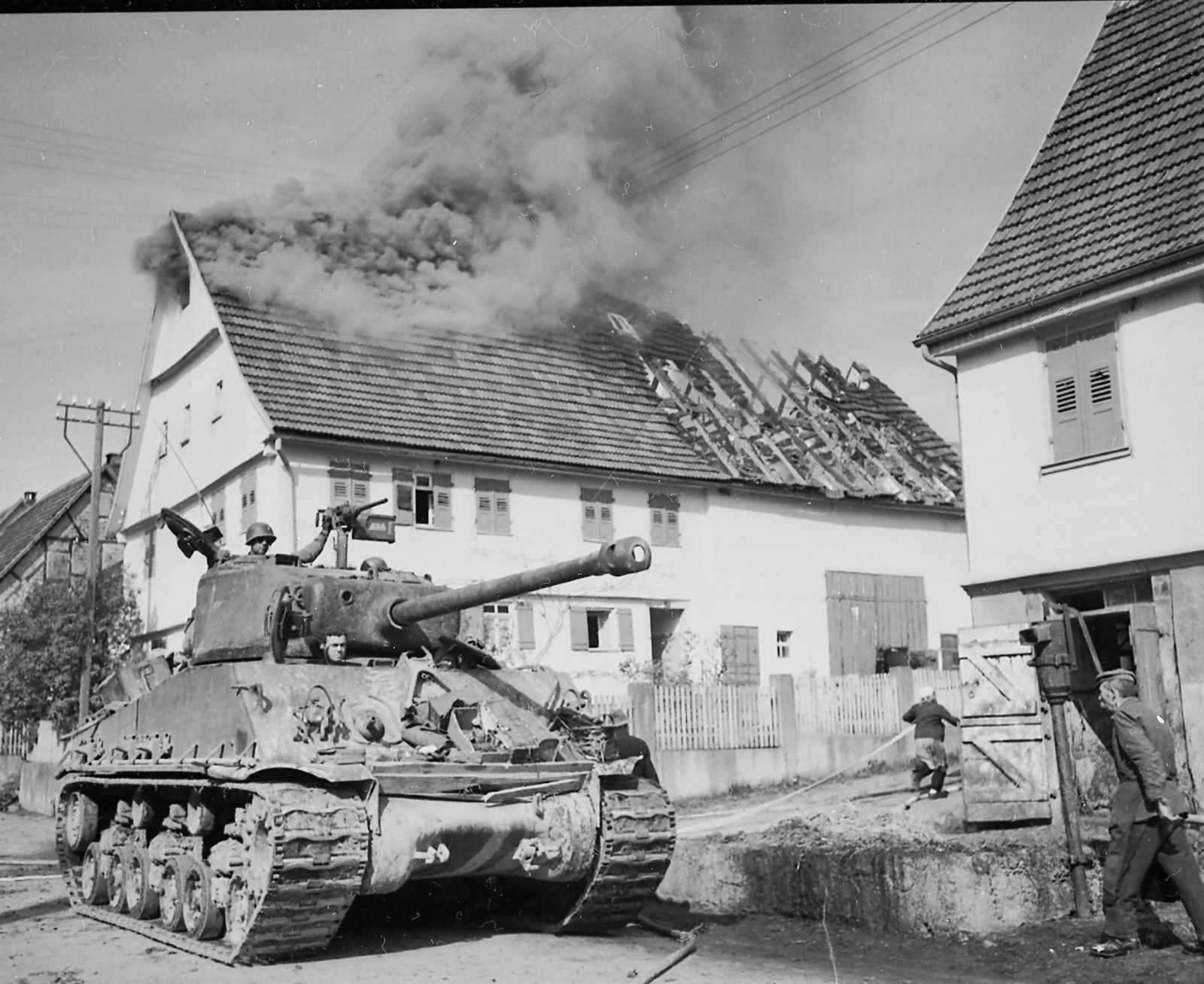
Most of the time pulling back wouldn’t be needed, the Sherman tank when supported properly, could make short work of all but the most massive buildings. The 75mm guns 1.5 pound TNT HE round would make short would of wood buildings, and WP smoke would fill it with smoke and set it on fire. For harder buildings, constructed of things like brick or stone, they may have to punch a few holes with AP before sending HE rounds in through the same holes. Plus the Sherman has two medium machine guns, and the turret .50 manned by a dough adding to the firepower. For anything really stubborn, they could bring in the 105 Sherman with its 6 pound HE charge. We also know Shermans, even when working with independent tank battalions tried to at least operate in pairs.
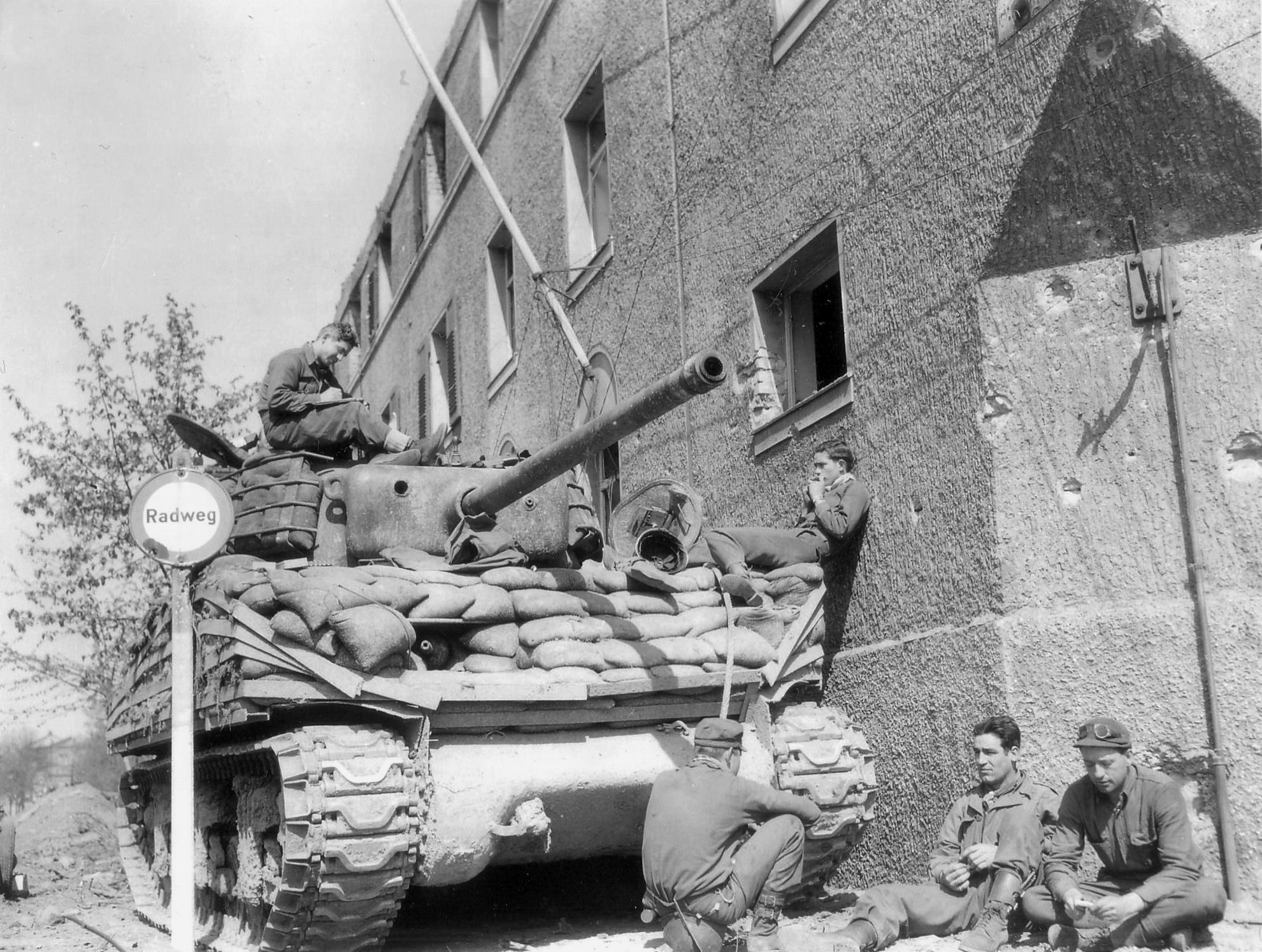
Even using the best tactics, tanks were lost, and many doughs went down, and while in allied countries, retaking ravished and conquered lands, restraint was encouraged and often shown. This was not the case in Germany and other pro-Nazi countries. Once in the lands of the enemy, and after seeing concentration and death camps most allied troops were unwilling to show restraint when the Nazis decided to make things hard and use a town as a strong point. Burning a whole town flat wasn’t out of the question if the Nazis fought hard, or the population helped much.
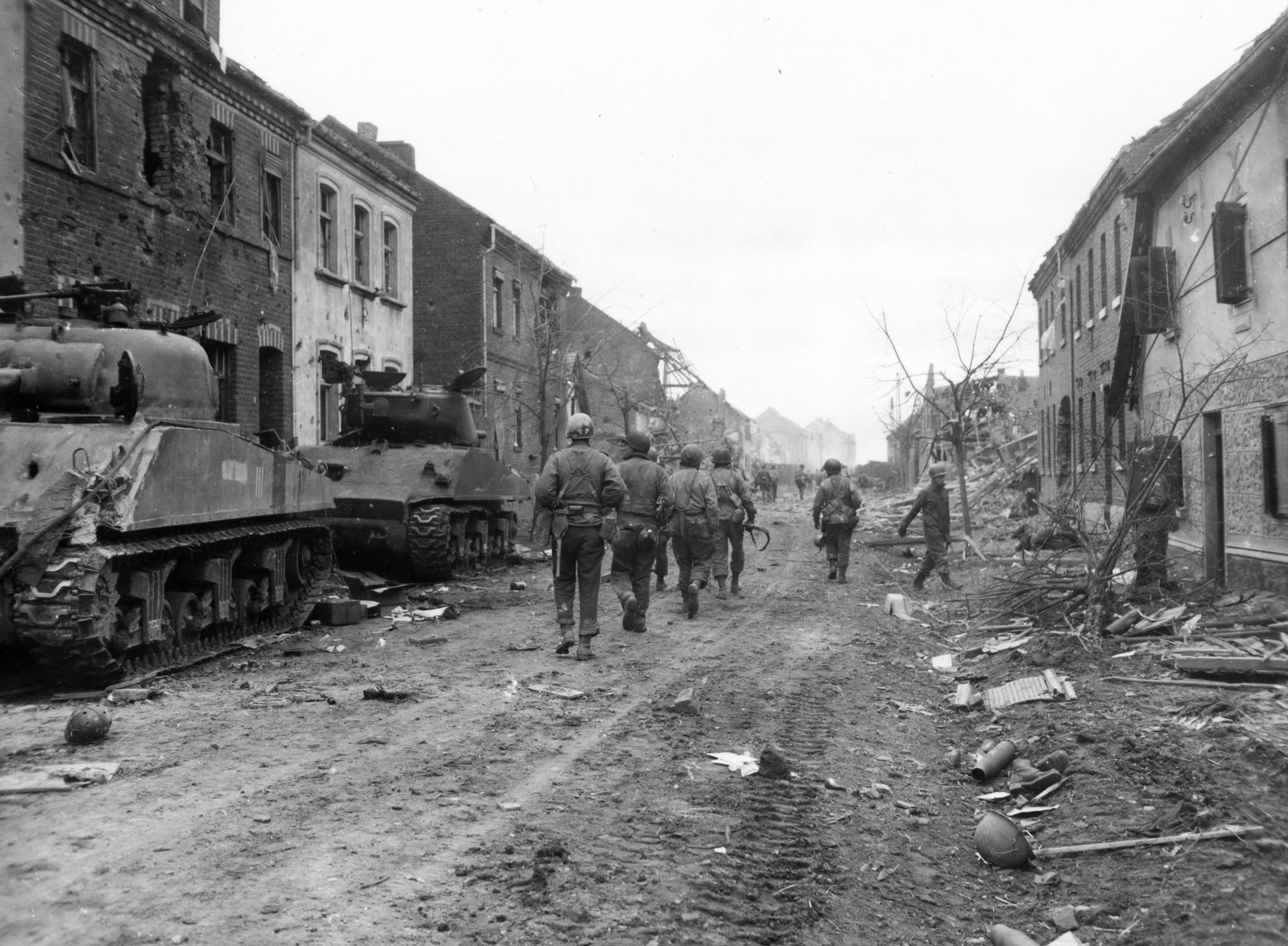
In some crowds, it is popular to decry the treatment the German people got by the Allies when the tied had turned and it was clear Nazi Germany was done for. I’m not going to knock the good guys for being harsh to the Germans, soldier, criminal SS, or civilian, I didn’t have to fight against the evilest regime in modern human history, and see the evil shit they did first hand, and am more than willing to accept they felt some Nazis, no matter their age, sex or type, deserved no mercy. The Nazi regime showed no mercy for the 6 million Jews, and 6 million other undesirables, after robbing them of everything including their hair, before murdering them in the death camps. They killed tens of millions of Russian civilians, and raped so much, they planted that seed in the Russians. The Nazi German regime raped, murdered, and robbed its way across Europe, they are lucky mankind had come far enough to not imprison every living adult German or worse. This site will never support Nazi propaganda, myths lies, or popularize war criminals like many other websites on the internet.
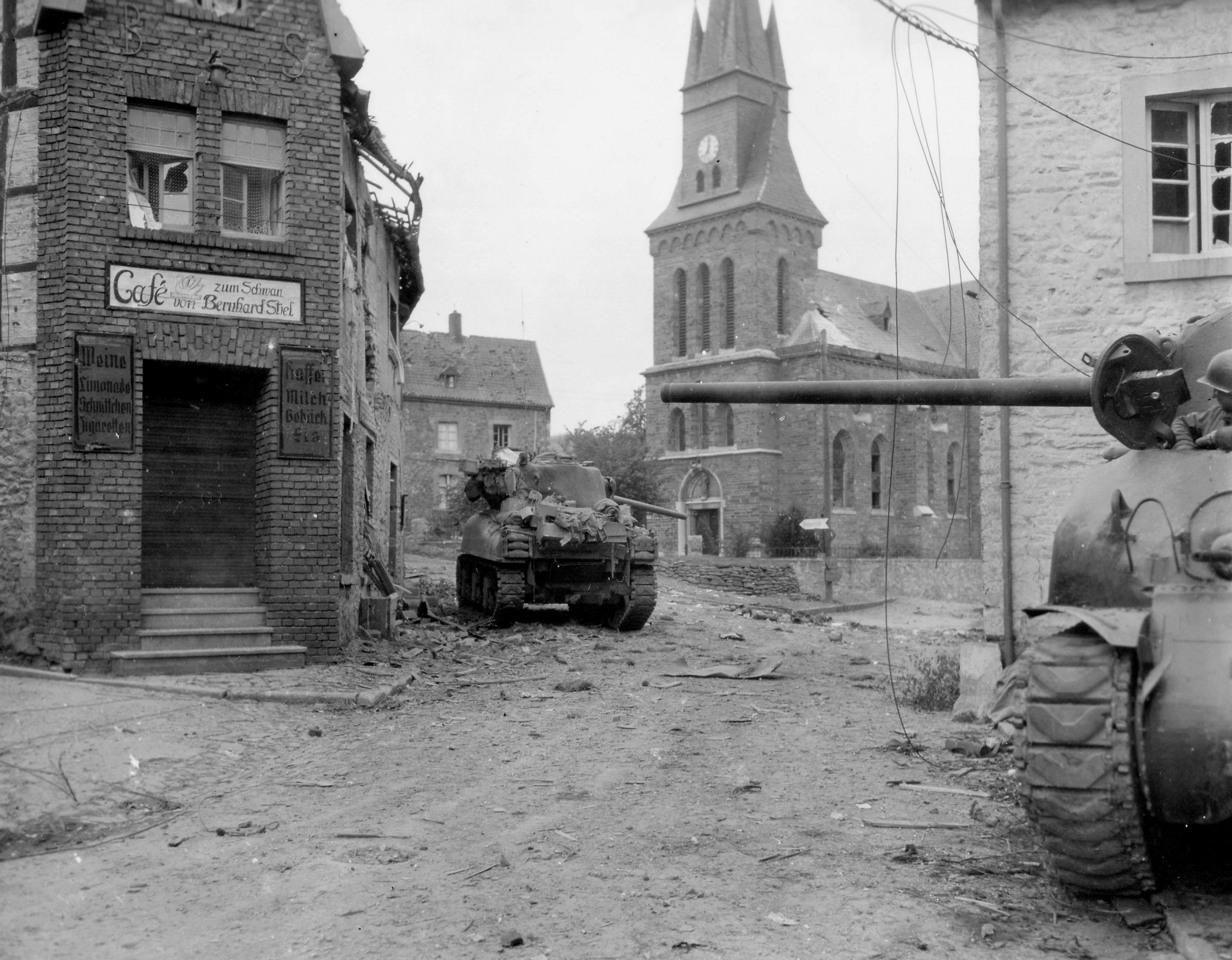
. . .
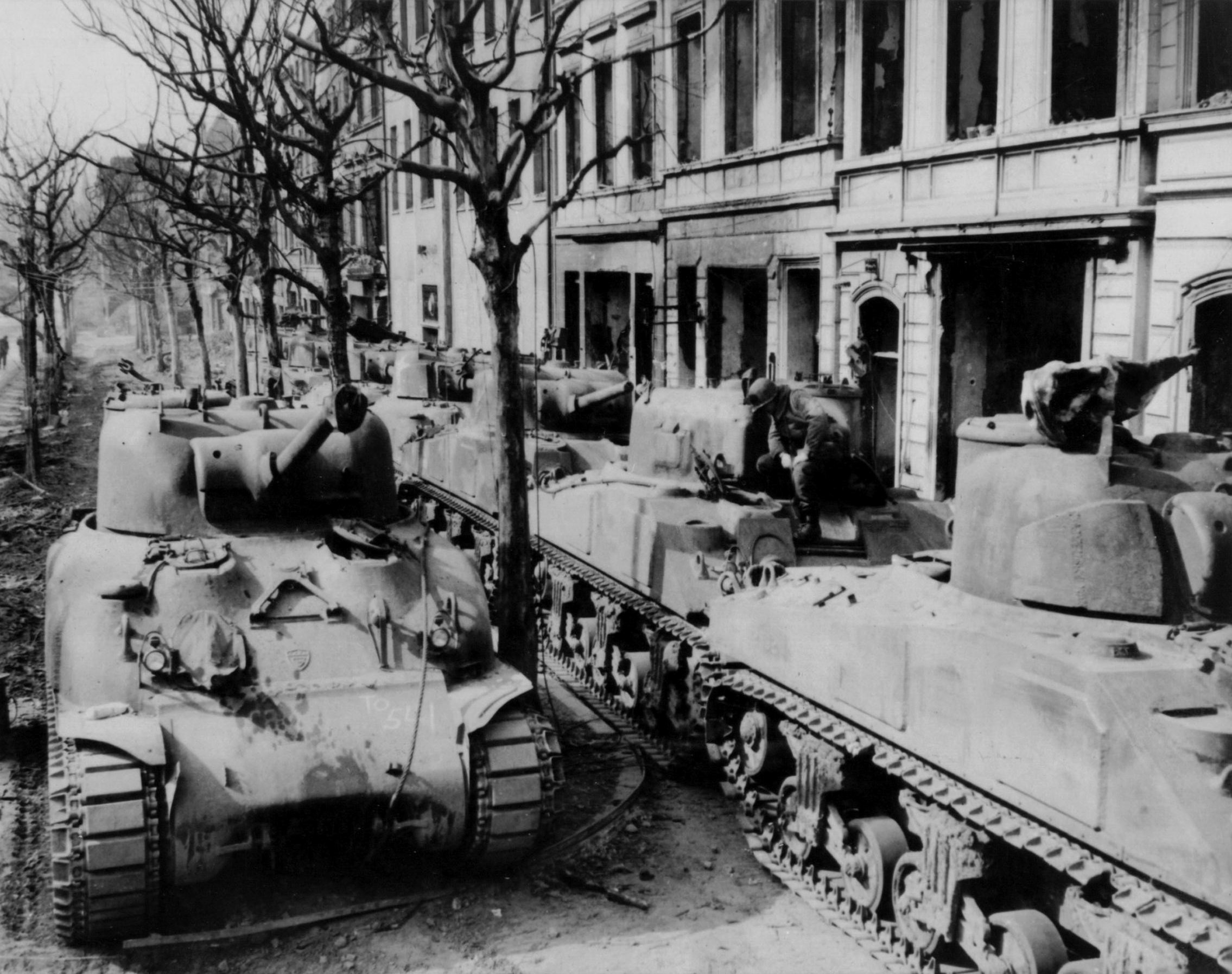
There was also something called the tank raid, but it fell out of favor pretty early on and depended on the enemy having no idea you were coming. This was basically a commando raid with tanks; they breakthrough in lightly defended area, and romp and stomp and then move on, before much resistance can build.
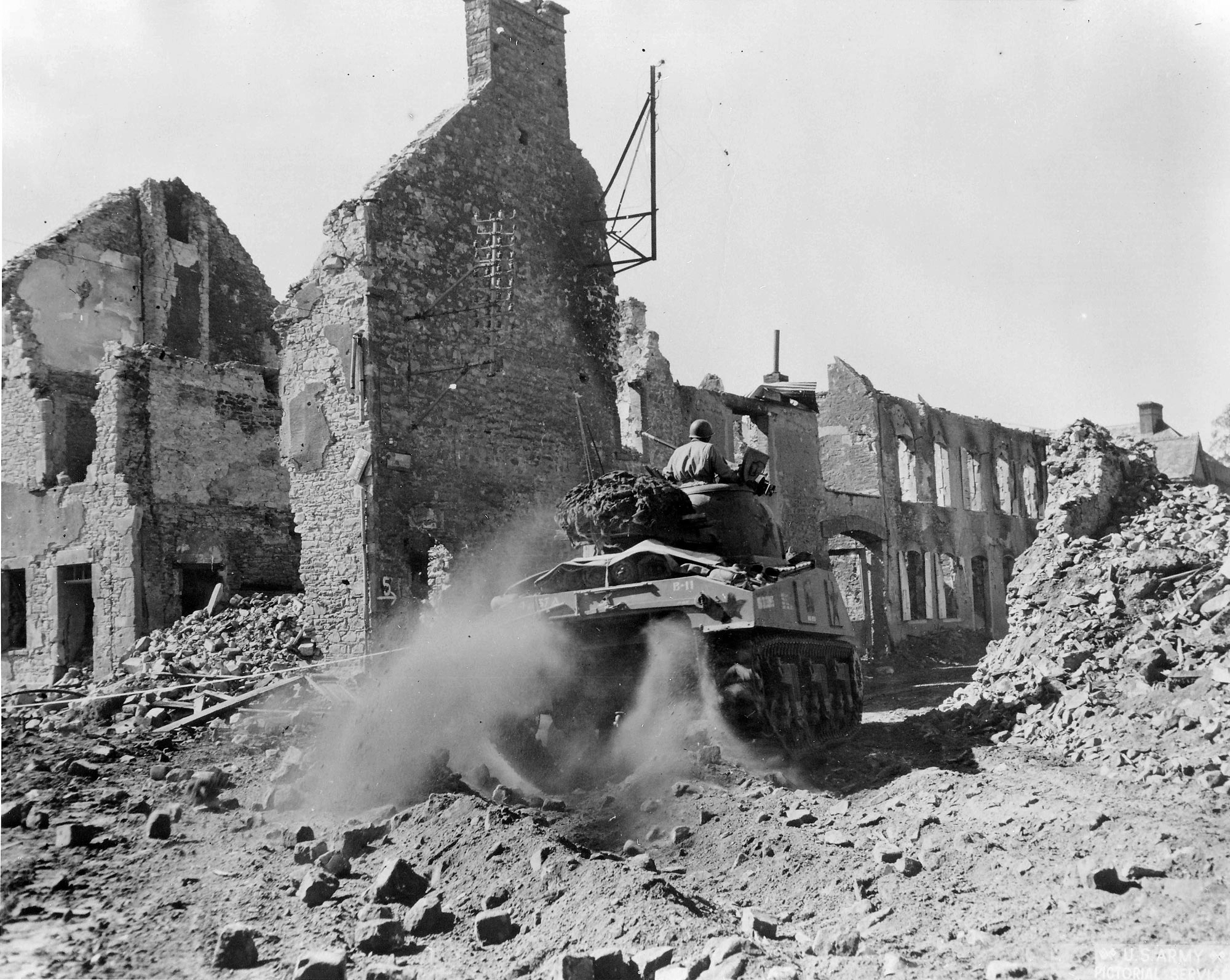
Using these tactics, the tanks, and any infantry riding them, could do a lot of damage to a unit that was capable of knocking them out, and running away before they got the chance, AA units, any kind of artillery really. If you can think of a unit that would be behind the lines, but somewhat close, your tank raid could come and ruin their night or early morning, or late evening. On a big scale, this is what the Armored Divisions were envisioned doing but rarely got the chance to do.
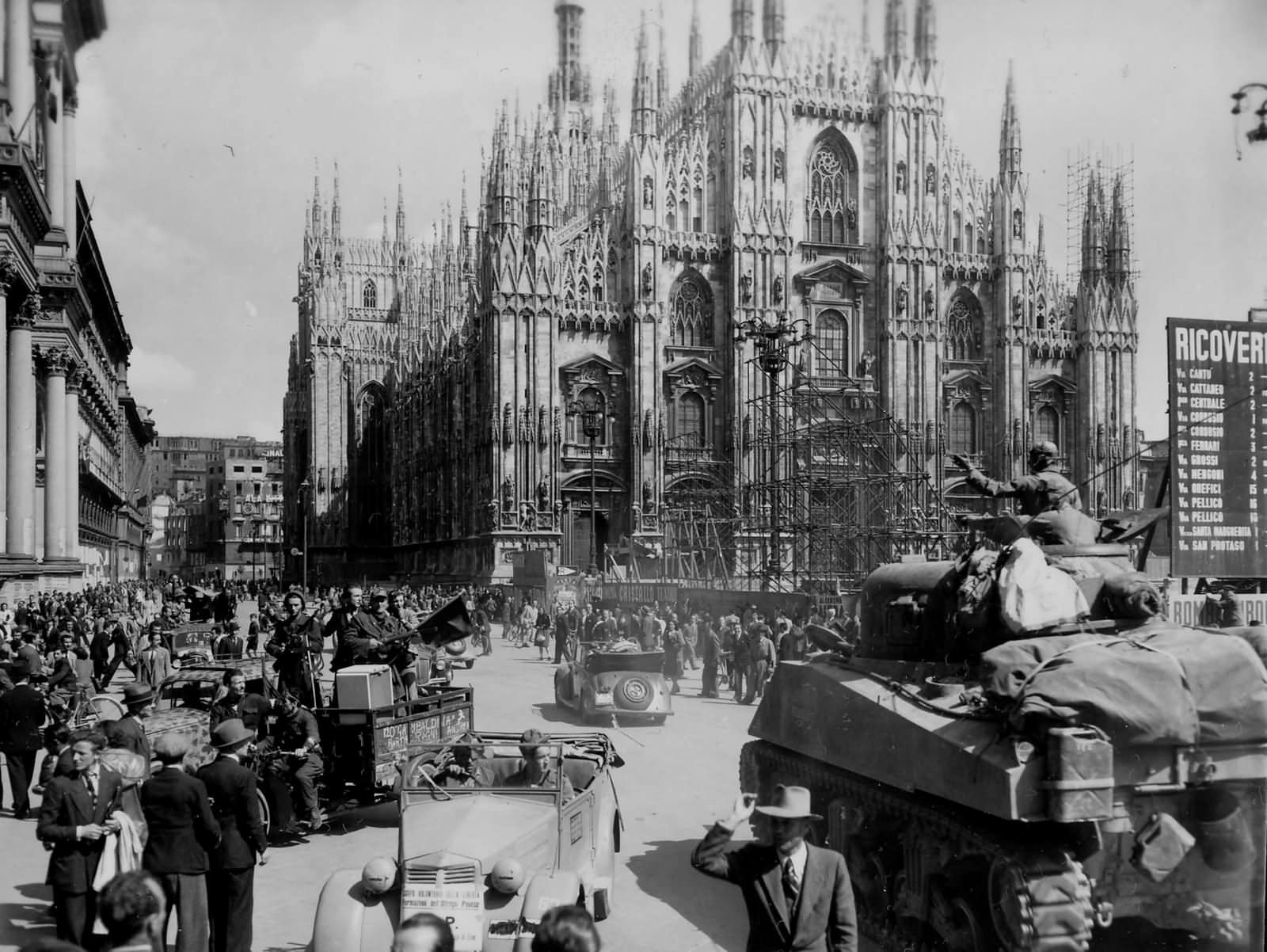
The big danger is in staying in one place long enough for a strong response to being formed, moving out into a unit that knew you were coming and has armor or anti-tank guns, or getting cut off and hunted down. Other problems are tanks breaking down, and getting lost, and not having enough space for everyone on the working vehicles. So for these to work they had to have limited objectives, a way in and out, and enough good intelligence on the area to know the areas to avoid that could kill your tanks. That’s a serious list of problems to overcome to make this work, and when tried, even in the Pacific, it usually resulted in a lot of lost tanks and dead or captured tankers and doughs.
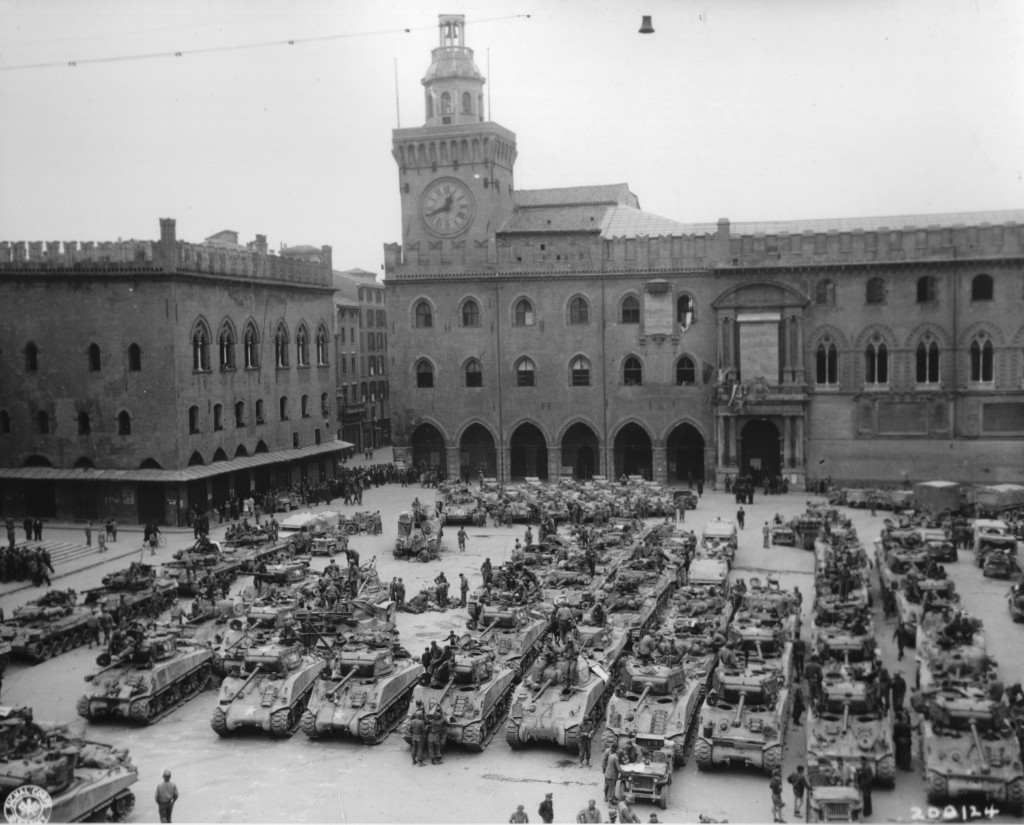
The train yard scene in the movie Kelly’s Heroes is a decent example of this, as far as movies go. This could also happen on accident when things were unsettled during a large attack, parts of units trying to get back to friendly lines could run into supply units trying to find the attackers, and fights could take place. There were cases where tanks were sent into urban areas by infantry officers who had no idea how to properly use tanks, but this went badly most of the time. On occasion, TDs were asked to fill in for tanks in the infantry support role, but this was a harder job for them since they had open-top turrets, less armor, and fewer machine guns.
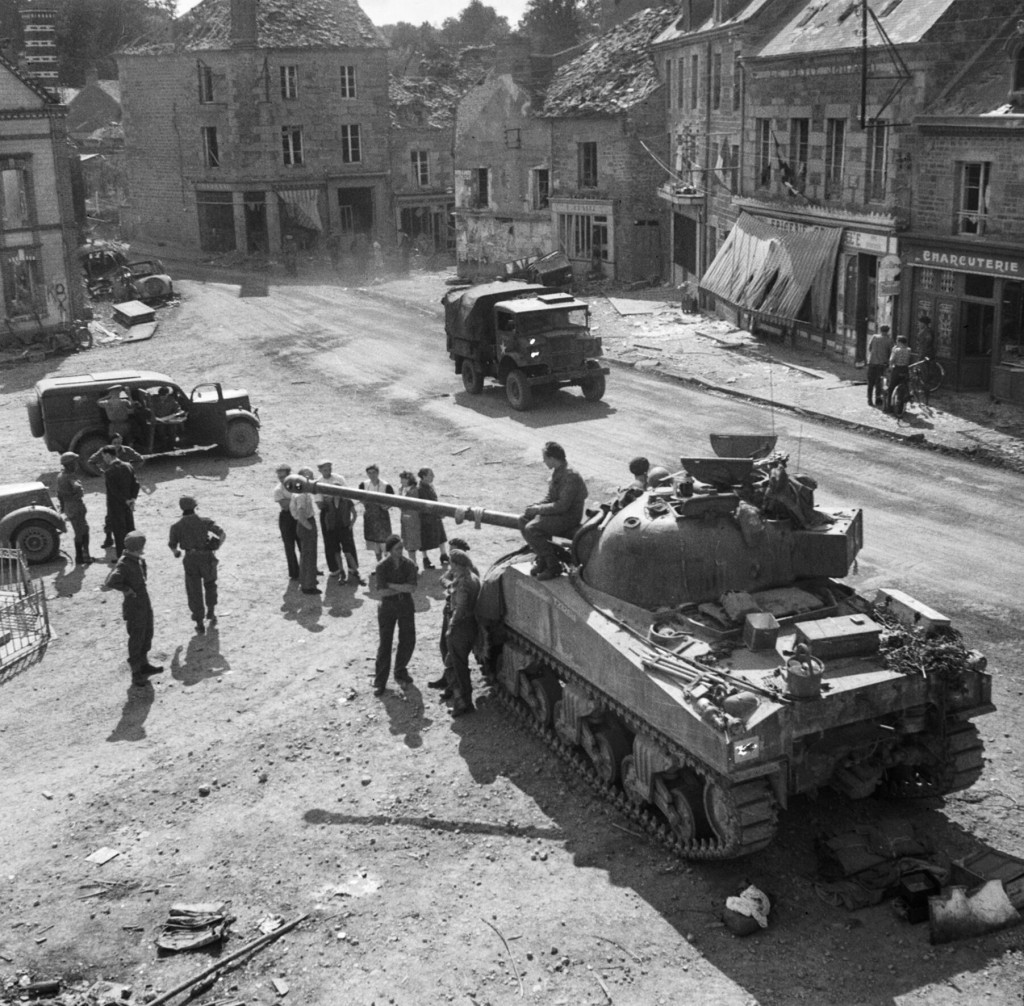
Sources: Combat Lessons, The Rank and file, what they do and how they are doing it 1-7, and 9. Oscar Gilbert’s, Marine Tank Battles in the Pacific, Harry Yeide’s, two Tank Battalion books, and his TD book. Zaloga’s Armored Thunderbolt, and Armored Attack.
